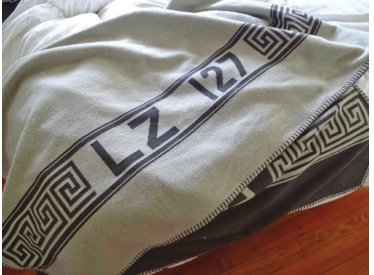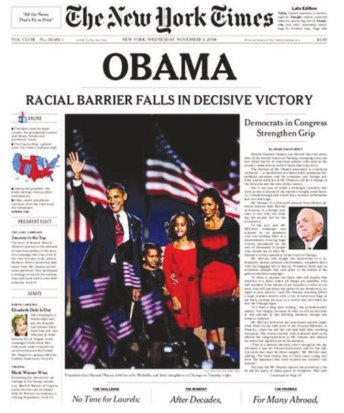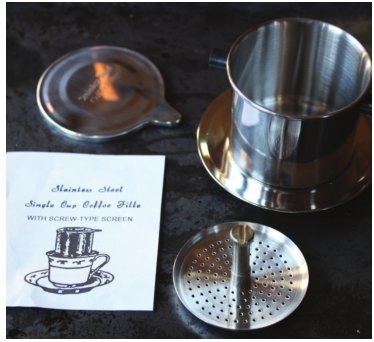‘Tony Bennett: Onstage and in the Studio’

Tony Bennett — to borrow from Irving Berlin — simply reeks with class. As does a coffee table book that is my gift suggestion for any fan of his. My favorite Tony Bennett story involves Sinatra. When late in life Sinatra couldn’t hack live performances anymore, he turned to recording duets of his standards. To make it easy on him, Sinatra recorded at his convenience and his singing partners at another time, sometimes across country. An engineer cobbled the songs together.
Except one.
Bennett insisted on doing it right: the two of them and the orchestra in the same studio to record “New York New York.” It’s Sinatra’s best performance on the album — because Bennett brought out his best. “Tony Bennett: Onstage and in the Studio” tells his story with appropriate class. Here is Anthony Dominick Benedetto of Astoria, Queens, the son of immigrants who inspired him to love music and art. Here is Joe Bari, singing in any club that would have him, until Bob Hope “discovers” him in 1949 (at the behest of songstress Pearl Bailey, who caught Bari/Bennett at the Greenwich Village Inn). Hope renames him Tony Bennett and puts him into his Paramount Theatre show. Here is a recording career that begins when Truman was president (!) and continues until … now (!). A demanding club and concert career, TV, even movies. Here is a man who brought down Radio City Music Hall at age 90. The studio in this book’s title is really two: the recording studio and the art studio. Bennett has painted as well as sung his way around the world. Turn to the photo on page 49. Here, from the back, is Bennett, shirt sleeves rolled up, staring at Central Park from his studio, a sketchbook in his hands behind his back, on it a pencil drawing of what Bennett surveys.
The photo is a painting in itself. The caption quotes Bennett:
“Nature is the boss!” Another handsome photo depicts Bennett sitting on a sofa’s edge with his arm on the shoulder of old friend Harry Belafonte, who in an accompanying essay extols Bennett’s early commitment to civil rights. Then Belafonte writes: “Now that we are in the winter of our years, he hardly speaks of it.” He is too busy being creative. Look at the last four years: an album of duets with Lady Gaga, a Grammy-winning tribute to Jerome Kern with pianist Bill Charlap and now, also in time for the holidays, an album of Gershwin songs with Diana Krall. This book would be worth it just for the photos, sketches, paintings and memorabilia. But it also abounds with a wonderful narrative by the great jazz radio host Dick Golden, who has been conversing with Bennett for five and a half decades. On the last page, there’s a close-up of Bennett's face, a hand over one eye, a twinkle in the other, a smile on his lips. On the opposite page is sheet music of one of his favorite lyrics. The song? “Life is Beautiful.”

Gretsch Jim Dandy Parlor Guitar
By SKYLER ASHLEY
Guitars are a commonly asked-for gift, but almost as commonly, they end up collecting dust for their once bright-eyed, now jaded recipients.
Why is that? Well, learning guitar is daunting. Many decide to put it down upon realizing mastering the six-string truly isn’t as easy as it may have first looked.
The metal stings and irritates your fingers, your wrists cramp, you sound rather bad and then you feel embarrassed for sounding bad!
I couldn’t blame anybody who decides to throw their first guitar into a smoldering pit of fire after spending three hours just to play an awkward, inaudible rendition of “Smoke on the Water.”
But, my theory is the major contributing factor to giving up so soon is that many buy a mediocre learner-grade guitar and curse themselves from the get-go. Nothing will discourage an aspiring player faster than thick-as-bridge-cable strings, jagged frets, a lame finish and a dull fret board that actively works against your fingers.
If you want to begin in style, aesthetically and sonically, catch the glint of the Gretsch Jim Dandy Parlor Guitar. It’s received critical acclaim in the music world for its low price (models range from $139 to $169) and its warm, classic sound that evokes memories of Dustbowl Folk, Delta Blues and all-around classic Americana.
What makes this guitar special? The first thing you’ll notice is just how damn slick it looks. Whether you decide on the flat black, or the handful of subtle burst options, it simply outshines many comparatively cheap guitars in the beauty department. All models come with a white binding — rarely seen on cheap guitars — that adds to its flair. The Jim Dandy exudes serious iconic Johnny Cash vibes. And a sharp style, especially for children — or hey, maybe adults who just want to look cool too — can provide helpful encouragement in the beginning.
Now let’s talk about the feel. The size and weight of a guitar, acoustic or solid body, can be intimidating. The size of the Jim Dandy gracefully circumvents this. Like all parlor models, it is much smaller than an average acoustic guitar.
What advantage does this give the beginner?
Namely, control. You don’t have to learn to work around the great big shell of a Dreadnought, or the thick slab body of a Les Paul. You have something lightweight that fits neatly in your lap, and can even be played standing without a strap.
The shorter scale also means you won’t have to stretch your fingers quite as far to learn all the proper chords. This is especially beneficial for young players, or those with small hands. Digging into the neck suddenly seems a lot easier and more natural when the shape of your instrument isn’t a hump you have to get over. For the beginning player, the Jim Dandy doesn’t stack the deck against you. It gives you a loaded hand.
I’ve already mentioned the sound, but here’s a quick history lesson. The parlor guitar conjures such classic sounds because it’s built to the specifications of the guitars many classic players had available to them. The parlor guitar has always been the “cheaper” model, and many celebrated blues artists were famously poor.
Innovation with what’s available breeds creativity, and the Jim Dandy is a thoughtful continuation of that legacy.
If I haven’t scared you away by this point, and you have a loved one itching to play guitar, seriously consider the Jim Dandy. And if they hate it, hey, you’re not out that much cash —right?

Zeppelin Passenger Blanket by Zoeppritz
By LAWRENCE COSENTINO
Despite its stern, military-issue appearance, this is a soft, warm and very comfortable wool blanket. It’s extremely well made, with functional but elegant stitched edges and a Greek key pattern woven into a contrasting band of color on each end.
But all of that is beside the point. This high-flying item is identical to the blankets found in the passenger cabins of the Graf Zeppelin, or the LZ 127, the last non-exploding Zeppelin (LZ 128 was never built and LZ 129 was the Hindenburg). The blanket is even made by the same company that made the original Zeppelin blankets — Zoeppritz.
With little danger, this blanket takes the blankee back to the long gone era of lighter than air travel, when huge bags of hydrogen or helium, encased in aluminum girders and a silver-painted fabric skin, cruised quietly through the skies like giant fish. (The rigid structure is what differentiates a majestic Zeppelin from nonrigid blimps, which are just amusing bags of gas.)
Planes may dominate air travel nowadays, but cramped little pills with smudgy windows and terrible food can’t hold a candle to a Zeppelin. (Holding a candle to a Zeppelin is a very bad idea anyway.) Contrary to popular legend, some Zeppelins enjoyed a long career and even made it to retirement without combusting.
Under the watchful eye of its intrepid commander, Hugo Eckener, the 800-footlong Graf Zeppelin made 590 flights from 1928 until it was scrapped in 1937, including a regular run from Germany to Brazil, voyages to the Middle East and the North Pole, several trips to North America and a famous round-the-world flight in 1929. The Graf flew over Detroit on its way from Los Angeles to New Jersey, the last leg of the trip.
Best of all, it never blew up even once, although it came pretty close a couple of times. Alas, the same cannot be said for an alarming percentage of Zeppelins, including the giant American airships Shenandoah, Akron and Macon, the British R-101 and, most famous fireball of all, the Hindenburg.
It’s a testament to the irresistible draw of lighter than air travel that they kept on making them at all, but there was something magical about voyaging in a Zeppelin — leaning out of an open window while cruising a few hundred feet or so over farms, cities, forests and oceans on a leisurely path to the nearest cavernous hangar.
The Hindenburg disaster put a period to lighter than air travel, but you can still get snug under this blanket, pour yourself a nightcap and even light a cigarette without a horrified radio announcer immortalizing the aftermath. It’s not cheap – about 200 British pounds or 250 bucks – but damn, it’s a Zeppelin blanket! Find it at the British “concept store” Pro-Idee at proidee.co.uk.
Give the gift of news
By KYLE KAMINSKI
This holiday season, I’d like to give the gift of information — in the form of a newspaper subscription.
It’s no secret print journalism has seen better days. Some media companies, once flush with cash from steady daily newspaper sales, have turned to the web to drive some much-needed revenue into their coffers. If it’s done properly, it can work. But for many, we’re watching a once-thriving industry devolve to the edge of absurdity.
Clickbait-style headlines taunt readers into perusing otherwise mundane stories. Articles are shorter. Less time is spent on developing sources, and more time is focused on outlining the more obscene or salacious details. Investigative reporting has surrendered to an era of “Top 10” lists and “Three Things You Won’t Believe.”
Times are desperate. But if you denounce the “fake news” in this country, understand you’ve created the framework. Readers, perhaps by our own making, have grown dependent on news at every level — from Lansing City Hall to the White House — without ever paying a dime. And it’s time to change that narrative.

These stories aren’t crafted in a few hours, or even a few days. Quality journalism takes time. It takes hours sitting through public meetings. It takes three or four trips to the courtroom. Reporters need the ability to pore over public records and Freedom of Information Act Requests — but they also need to put food on the table.
The American Press Institute noted only 53 percent of adults are willing to pay anything to stay stay informed. Readers, by and large, seem reluctant to fork over monthly premiums to digest their news. Paywalls are thwarted. Whoever can provide the quickest read, albeit at the expense of accuracy, can score the click.
If you aren’t willing to take on your own newspaper subscription, consider giving that gift of knowledge to someone else. This isn’t a plug for City Pulse; We distribute thousands of papers for free and our website won’t charge you a cent. This is a plea for the rest of the industry, which — now more than ever — could really use your help.
Journalists hold governments accountable. We provide a voice for the voiceless.
And this takes time — and money. Chuck Plunkett at the Denver Post might have said it best when he suggested that productive citizens bear a sort of “social contract” to provide at least some support to the newsrooms that so often support them.
“After all, I pay for novels,” Plunkett wrote. “I pay to see fine films and good music to support those artists. I pay to see exhibits, and plays and concerts. I support those contributions to the Big Conversation, and happily so.”
So why the hesitation when it comes to paying for news? Find an outlet that speaks to your interests and can keep you informed of the issues that most directly impact your daily life. I’d suggest the New York Times or the Washington Post at less than $10 per month. Options are endless. But find a newspaper that works best for you.
If your loved one treats your newspaper subscription like a pair of socks stashed under the Christmas Tree, that’s just fine. It’s understandably not the most exciting present to receive. But, much like the socks will eventually find their use as well, the recipient will surely appreciate the ability to better understand the world around them. By DENNIS BURCK
Vietnamese ‘Phin’ Single Serve Coffeemaker

The fight to save the planet need not be decaffeinated. There are better and cheaper alternatives to enjoy the second-most traded commodity in the world, single serve and on-the-go, instead of the modern coffee pod machine.
Introducing the “Phin,” the mighty and simple single serve coffeemaker that powers Vietnam’s caffeine needs. In stark contrast to the mostly tea drinking East, the Vietnamese have a dedicated and unique coffee culture around the nation’s most consumed beverage with the Phin on the frontline. And though we often think of South America as the coffee haven, Vietnam knows quality coffee as it is the second leader in coffee production in the world.
Operating a Phin is not rocket science.
No disposable filters, power or plastic pods required, the Phin operates as a “drip filter” gravity coffee maker composed of a cup, filter and lid. Scoop in the coffee, pour in some near boiling water and, voila, a fresh cup of coffee in three minutes. Rinse out the grounds and it’s ready for action again.
Why is it important to be coffee conscious? The waste from coffee pods isn’t going anywhere soon. The high density plastic that must stand up to intense temperatures as well as preserve the coffee freshness is problematic to recycle. A coffee pod must be rinsed of grounds and have its aluminum top separated from the plastic to be accepted. Otherwise, it goes straight into the landfill.
Inventor of the coffee pod machine John Sylvan even admitted that recycling coffee pods is a nightmare. He told the Atlantic in 2015, “No matter what they say about recycling, those things will never be recyclable. The plastic is a specialized plastic made of four different layers.” Sylvan later said he never intended for his invention to be used outside of an office setting en masse.
By now, according to the Washington Post, enough coffee pod trash has been produced to encircle the globe 10 times.
And if environmentalism doesn’t convince you, maybe price will. The “Phin” is available for around $10 online and locally at LLB Asian Mart. Some modern coffee pod machines can range easily above $100.
Also, the Phin opens up a new world of coffee often unseen by the West: Most Vietnamese take their “Ca Phe” with a spoonful of sweetened condensed milk to start their morning — a practice formulated from a past lack of fresh milk in the country. It is also traditionally mixed with a light yogurt.
However, when selecting a Phin, it is important to take note of its size as most run small around 8 to 10 oz. A 12 to 16 oz. should do nicely in most thermoses.
So, reinvigorate your java and redefine single serve coffee with the cheap and effective Phin.
Besides, if there ever was a thermonuclear holocaust and an alien civilization finds earth devoid of life, the last thing we need to be remembered by is how much we enjoyed our “doughnut shop blend.”
Support City Pulse - Donate Today!
Comments
No comments on this item Please log in to comment by clicking here